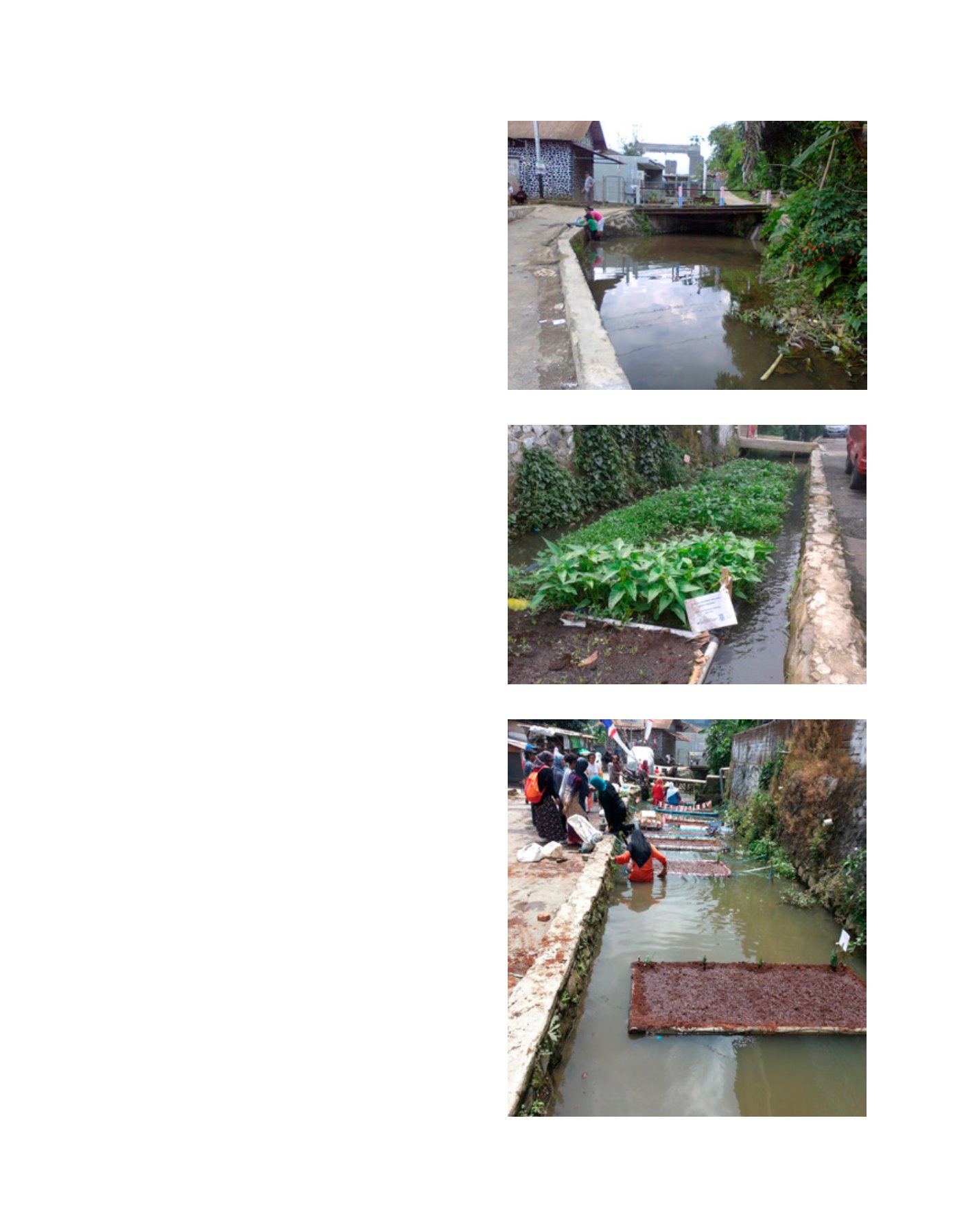

[
] 103
access
to
water
and
sanitation
for
all
which was carried out by a contractor using heavy equip-
ment, along with community involvement.
The installation of pipelines was the most extensive work
in the project, with the extent of the digging causing disrup-
tion and public complaints. This part of the project required
intensive monitoring to avoid threats to the schedule. The
use of local workers was advantageous as the community
was able to discuss progress with them directly. The sedi-
mentation tank and biofilter were constructed and installed
simultaneously with the pipelines.
In order to maximise public participation, construction of
the floating wetland was carried out by the community via
a competition. ITB provided the funds for this part of the
project, including the supply of pipes, planting media, net
and plants. The best builder of FTWs received prize money.
Post-installation monitoring showed that the plants grew
vigorously and were ready for harvesting after one month.
The project was able to deliver many positive effects to
the community. During construction, residents were very
helpful in finding the path of each of the pipelines through
which their domestic wastewater was discharged. After
completion of the project, the community began using the
river for activities such as fishing and swimming, both quite
impossible before the project was launched.
Lessons learned
The ideal of community involvement in these projects is,
in practice, challenging and difficult to implement. Some
lessons have been learned that may be useful as considera-
tions for similar projects, as follows:
•
Conflict of interest
: in low-economy communities, the
common assumption is that a lot of money is involved.
There is also a hope within the community that this kind
of project might create the opportunity for obtaining
money directly.
•
Building trust
: this is a complex challenge, especially
where there have been bad experiences from previous
projects, leaving the feeling of having been exploited to
the benefit of others. The involvement of government offi-
cials or a village leader can help to overcome this problem.
•
Culture and attitude change
: there is often the need to
change local attitudes in order to gain support for a project.
In the case of river restoration, attitudes to dumping waste
in the river must change if the project is to be sustainable.
•
Economically attractive
: one approach to garnering full
community support is to ensure direct economic benefit.
The decision to use FTWs introduced the possibility of
harvesting the plants, giving the community products
that they can eat or sell. However, in urban communities
such as Bandung City, more economically attractive activi-
ties might need to be established.
•
Continuity and sustainability
: the main point of commu-
nity involvement is project sustainability – the ability
to maintain systems into the future. The establishment
of leadership and organization is necessary to ensure
responsibility for operation and maintenance. A simple
system – in this case, a simplified sewerage and wastewa-
ter treatment system – is more easily achieved as it is more
easily understood by the community.
The growth of plants on the Floating Treatment Wetlands after one month
Community involvement in maintaining the Floating Treatment Wetlands
Daily usage of river water by the community
Image: IoT
Image: IoT
Image: IoT
















